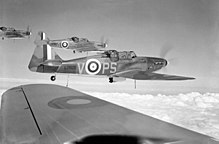
Avro was a British aircraft manufacturer. Its designs include the Avro 504, used as a trainer in the First World War, the Avro Lancaster, one of the pre-eminent bombers of the Second World War, and the delta wing Avro Vulcan, a stalwart of the Cold War.
British military aircraft designations are used to refer to aircraft types and variants operated by the armed forces of the United Kingdom.

Handley Page Limited was a British aerospace manufacturer. Founded by Frederick Handley Page in 1909, it was the United Kingdom's first publicly traded aircraft manufacturing company. It went into voluntary liquidation and ceased to exist in 1970. The company, based at Radlett Aerodrome in Hertfordshire, was noted for its pioneering role in aviation history and for producing heavy bombers and large airliners.

Schräge Musik, which may also be spelled Schraege Musik, was a common name for the fitting of an upward-firing autocannon or machine gun, to an interceptor aircraft, such as a night fighter. The term was introduced by the German Luftwaffe during World War II. "Schräge Musik" was previously a German colloquialism, meaning music that featured an unusual tuning and/or time signature. The standard usage of the adjective schräg is often translated as "slanting" or "oblique", but its slang usage is often translated as "weird" or "strange".
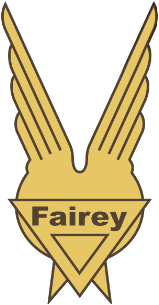
The Fairey Aviation Company Limited was a British aircraft manufacturer of the first half of the 20th century based in Hayes in Middlesex and Heaton Chapel and RAF Ringway in Cheshire that designed important military aircraft, including the Fairey III family, the Swordfish, Firefly, and Gannet. It had a strong presence in the supply of naval aircraft, and also built bombers for the RAF.

The Blackburn Roc was a naval fighter aircraft designed and produced by the British aviation company Blackburn Aircraft. It took its name from the mythical bird of the tales of the Arabian Nights, the Roc. It was operated by the Fleet Air Arm (FAA) and was active during the Second World War.

The Boulton Paul Defiant is a British interceptor aircraft that served with the Royal Air Force (RAF) during World War II. The Defiant was designed and built by Boulton Paul Aircraft as a "turret fighter" to meet the RAF requirement for day and night fighters that could concentrate their firepower on enemy bombers which were not expected to have fighter escorts due to the distance from Germany to the United Kingdom. The Defiant had all its armament in a dorsal turret offering the ability to fire in most directions. The same principle was used in the Royal Navy's Blackburn Roc which was also built by Boulton Paul.

The Handley Page Halifax is a British Royal Air Force (RAF) four-engined heavy bomber of the Second World War. It was developed by Handley Page to the same specification as the contemporary twin-engine Avro Manchester.

Boulton & Paul Ltd was a British general manufacturer from Norwich, England that became involved in aircraft manufacture.
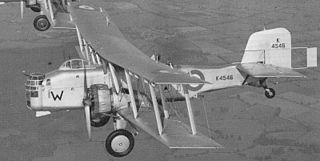
The Boulton Paul P.75 Overstrand was a twin-engine biplane medium bomber designed and produced by the British aircraft manufacturer Boulton Paul. It was the final example of a series of biplane medium bombers that had served in the Royal Air Force since the First World War, starting with the likes of the Vickers Vimy and Handley Page Type O. The Overstrand was also the first aircraft to be fitted with a fully-enclosed power-operated turret.
Sir W. G. Armstrong Whitworth Aircraft Company, or Armstrong Whitworth Aircraft, was a British aircraft manufacturer.

A tail gunner or rear gunner is a crewman on a military aircraft who functions as a gunner defending against enemy fighter or interceptor attacks from the rear, or "tail", of the plane.
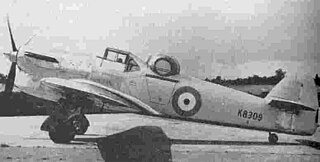
The Hawker Hotspur was a fighter aircraft used principally by the Royal Air Force. It was designed in response to Air Ministry Specification F.9/35, which required a powered turret as the main armament to replace the Hawker Demon. It was developed from the Hawker Henley, which was redesigned to take a Boulton-Paul semi-powered four gun turret.

The Boulton Paul P.92 was a British design by Boulton Paul for a two-seat, turret-armed, twin-engine heavy fighter and ground attack aircraft to meet Air Ministry Specification F.11/37. Only a half scale prototype – the P.92/2 – was built and tested as check on aerodynamics before the project was cancelled in 1940.

Nash & Thompson was a British engineering firm that developed and produced hydraulically operated gun turrets for aircraft. As part of Parnall Aircraft it was also an important manufacturer of hydraulic-powered radar scanners used on radar systems such as H2S and AI Mark VIII.
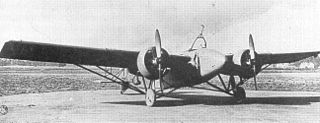
The Boulton Paul Bittern was a 1920s British night-fighter aircraft built by Boulton Paul Limited of Norwich, named after the marsh bird of the same name.
Dowty Group was a leading British manufacturer of aircraft equipment. It was listed on the London Stock Exchange and was once a constituent of the FTSE 100 Index. The firm ceased operating as an individual entity following its acquisition by TI Group in 1992.
John Dudley North, CBE, HonFRAeS, MIMechE, was Chairman and Managing Director of Boulton Paul Aircraft.
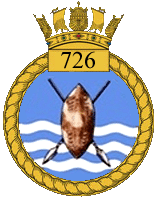
726 Naval Air Squadron was a Naval Air Squadron of the Royal Navy's Fleet Air Arm. It was formed as a Fleet Requirements Unit from 1943 to 1945, operating out of R.N. Air Section Durban, at S.A.A.F. Station Stamford Hill, Durban, South Africa, during its existence. It operated various aircraft including, Bristol Beaufighter, Boulton Paul Defiant, Fairey Fulmar, North American Harvard, Vought Kingfisher, Miles Martinet and Fairey Swordfish.

